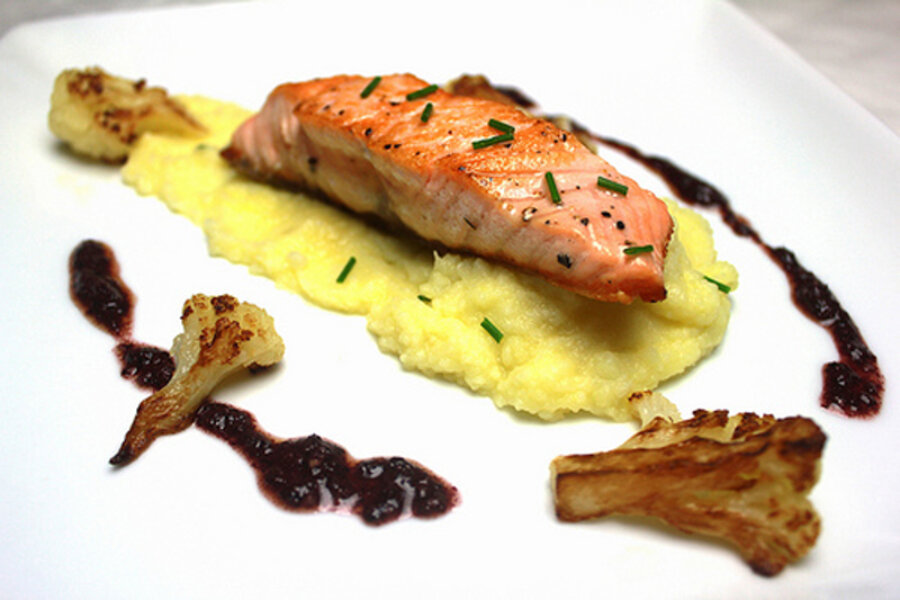Travel: Iceland and pan-seared salmon
Loading...
My guidebook assured me that three out of five Icelanders believe that faeries, mischievous sprites and trolls are real. Many, it continues, actively take precautions against them, refusing to set foot in the spots they are thought to inhabit. My first introduction to the country, the drive from the airport into Reykjavik, past a giant aluminum smelting factory set in a jet black lava field against gun-metal clouds, felt more like Bladerunner than the redoubt of spirits.
The homogeneity of the Icelandic population is such that, I, a tall, fair-haired white man, was always addressed in English. This was possibly for the best since Icelandic sounds like an even more inscrutable version of the Elvish tongues lisped so cloyingly in the Lord of the Rings. Happily, though, for students of this, the original Norse, there are no regional accents, slang or dialects of Icelandic to contend with. That there are less than 250,000 native speakers helps keep the number of foreign students limited to either the truly committed or the mildly eccentric.
However, spending my week there with an Icelandic family meant that my exposure to the language was greater than the average tourist, and so it was that by its end, I could both write and pronounce “Hej, hvað segir Þu?” (Hi, how are you?) and “Fint, takk fyrir!” (Fine, thanks very much!”) well enough that everyone still responded in English.
On my final, gorgeously sunny evening, with the light dancing off the twinkling wake, I took a boat across Reykjavik harbor to dinner on the island of Viðey with a consequent degree of pessimism about my prospects for a decent meal. The summer though, is an inversion of everything that is awful about Icelandic winters, from the weather to the cuisine, and I was delighted by everything on offer, that is, until the arrival of the almost preposterously enormous bill.
On my plate that night was a gloriously simple pan-fried arctic char of the most luminous orange over a cauliflower mousse that the chef had sculpted to resemble a ski-jump, surrounded by some tiny, inky-hued Siberian tomatoes, greenhoused locally. The combination of fish, snow and black boulders felt like a distillate of the country itself, in microcosm. Perhaps only a sprinkling of pixie dust was missing.
Recreating that dish some years later, I opted for salmon over char, cauliflower mash over mousse, and a purple basil pesto in place of the dusky tomatoes. As we edge into fall, all these vegetables are at their peak, and the contrasts they offer are as interesting texturally and aromatically as much as they are visually.
Pan-Seared Salmon, Cauliflower Mash and Purple Basil Pesto
1-pound salmon (or trout or arctic char) fillets
1/2 large head cauliflower, chopped into florets
2 medium floury potatoes, peeled and cut into inch cubes
abundant boiling water
1/4 cup whole milk
2-4 ounces unsalted butter
salt and black pepper
1 large bunch purple basil, stalks removed
1/4 cup best olive oil
handful of pine nuts
2 teaspoons lemon juice or vinegar
1. In a large pot, boil potatoes and cauliflower until very tender, 10-12 minutes. Drain and return to pot.
2. Add milk, butter, salt and pepper, and mash until smooth. Then beat with a spoon until it has a whipped texture.
3. In a blender, pulverize basil leaves with olive oil and a pinch of salt until you have a lovely purple puree. Add pine nuts and blend until smooth. Add lemon juice and correct seasoning.
4. Heat a large saute pan to medium high, add 1-2 tablespoons neutral flavored oil like grapeseed. Season salmon fillets on both sides. Cook skin side down first for three or four minutes, or until skin releases from pan and you can turn them without tearing it.
5. Cook for another one or two minutes on flesh side or until medium inside. Remove from pan and allow to rest.
6. Assemble all on a plate, marvel at the color contrast and enjoy.
Sign-up to receive a weekly collection of recipes from Stir It Up! by clicking here.







